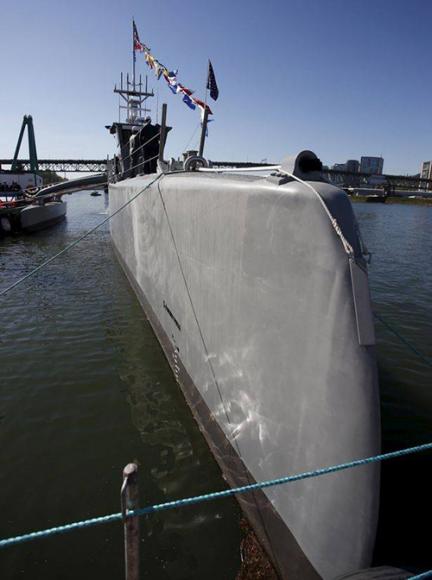She was baptized Sea Hunter and it is the first automated platform, designed to detect submarines navigating the ocean, to sail the sea. For the Pentagon there is no doubt: the Sea Hunter represents the dawn of a new era in naval tactics and in the field of automation.
The ACTUV program (Anti-submarine Warfare Continuous Trail Unmanned Vessel) reflects the concept of "global independent displacement". There Sea Hunter can navigate to 27 nodes staying at sea for 70 / 90 days (depends only on fuel). The presence of the human operator is foreseen only as "remote supervisory control". This translates into a zeroing of losses and the ability to extend missions at sea (the latter are limited both by the stress of the staff on board the supplies and the natural wear and tear of the systems).
La Sea Hunter will carry out a series of missions: from reconnaissance to the surveillance of enemy submarines. The trimaran will use on-board sensors to monitor the "traffic" in the depths of the seas thanks to its long and short-range radar. The relatively small dimensions at 140 tons and 40 meters in length, give the ship manageability and robustness. The cost of maintenance varies from 15 to 20 thousand dollars a day. A cruiser requires 700 thousand a day.
The Pentagon expects to have an automated fleet capable of performing various tasks over the next five years. The main drone software was developed on the strategies of human users who played the simulation "Dangerous Water" developed by Sonalysts Combat Simulations and released in the 2005. The tactics used by the players were examined by the company to improve and develop the main software. Even before writing the software, DARPA asked for the approach and method of the gamers who tried their hand at fighting simulation.
The ACTUV program was created with the aim of monitoring the silent diesel-powered attack submarines that continue to proliferate around the globe thanks to their low access costs. Iran should have 17 in service, the Chinese 53. According to the Navy, the final cost of each ACTUV will be twenty million dollars. Sea tests, started a few hours ago, will end in September of the 2017. The first is planned in the 2020 displacement global independent.
(images: DARPA)












